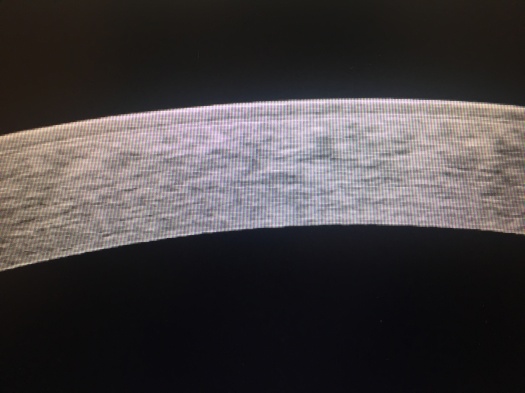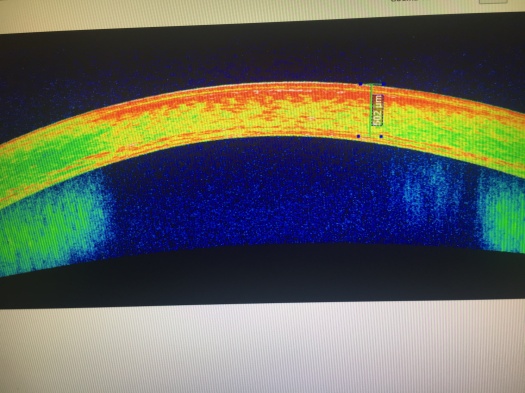The most fascinating strategy is one-pack self-crosslinking resins that are intended for specific market places. Reformulating polymer resins into useful, cost effective materials is among the most significant regions of polymer science and an extremely active region of industrial research. Polymers might also be crosslinked by way of electron irradiation. Each Ig monomer includes two antigen-binding websites and is supposedly bivalent. Nonspecific crosslinking is simpler to be controlled. Collagen crosslinking might turn into the conventional therapy for progressive keratoconus later on diminishing significantly the demand for corneal transplantation. 1 sort of gel you might be acquainted with is crosslinked polyacrylamide.
CXL can frequently be repeated when treatment isn’t powerful. CXL can be carried out with different procedures, including Intacs or Topography-Guided PRK (TG-PRK) so as to prevent progression and assist with vision. CXL isn’t a cure for eye diseases like keratoconus, but it might improve vision and permit patients to decrease the strength of their eyeglasses prescription and wear softer, more comfortable contact lenses. CXL is a topic that’s been attracting growing interest over the past ten years. In some instances CXL can be done after corneal transplantation. CXL was accepted by the FDA in america in April 2016. CXL is now the most commonly used procedure throughout the world to take care of the progressive vision loss related to keratoconus.

The War Against Crosslinking
PVC is found in all differnet forms of sizes and is typically employed for bigger pipes. PVC pipes are a lot stronger than PEX pipes and are usually utilised in sewer systems and several water systems. A bit of a crosslinked material that has absorbed a great deal of solvent is known as a gel. The UV light section of the treatment typically lasts about thirty minutes. Such a material is referred to as a thermoplastic. The corneal thickness is going to be checked, and then the UV light is going to be applied for as many as half an hour. Hardness is likewise an important property for industrial pigmented metallic coatings.
To work, the crosslinked antibody-toxin has to be stable and equipped to find and target the right cells in vivo. The resulting crosslinks can give a sign of the interactions happening in a cell in an answer to some stimuli. Very good crosslinks connect naturally-related components of the SCP universe with each other to make a larger perspective of the SCP-verse. Crosslinking of collagen denotes the capacity of collagen fibers to form strong bonds with different fibers. Preoperative pachymetry and individual charge of the ultraviolet A-irradiance prior to each treatment are mandatory. Corneal cross-linking is performed to stop vision from getting worse, and in some instances it can prevent the demand for a cornea transplant.
Crosslinking Help!
Epi-on crosslinking has to be accomplished with higher energy levels to create more crosslinking. The objective of CXL is to prevent more deterioration of vision for the majority of patients and to potentially improve vision. Also try to remember that, for patients who have refractive in addition to medical advantages, we must adhere to the coordination of benefits requirements particular to the individual policy. The advantages of CXL treatment can endure for several decades, and clinical studies have revealed that the strengthening effect of the procedure could possibly be permanent.
Some patients could be in a position to have an excimer laser treatment (PRK) to enhance their vision without the necessity for glasses after they’ve healed from the CXL procedure. Every patient differs. He must be seen at least twice during the week following the procedure. Again, in the event the patient doesn’t have coverage for those materials, they will need to pay out-of-pocket in their opinion. Most patients experience a quick period of blurred vision that might be worse than it was before a conventional CXL procedure. They find that for the first few days after the cross-linking treatment, their vision is actually worse than it was before the procedure. The CXL treatment doesn’t remove tissue.
Your Keratoconus treatments are predicted to serve you the remainder of your life. Much like any disease or health concern, it’s better to find treatment in the early stage of the condition. The 30-minute corneal crosslinking treatment is done in the physician’s office. The result is also to extend the duration of the side chain by numerous angstroms. The UV’s effect can result in reactive interactions and lead to DNA and the proteins which are in touch with it to crosslink.
Getting the Best Crosslinking
Based on the individual, the epithelial surface cells may be taken off. In the event the second protein doesn’t have available native sulfhydryl groups, they are sometimes added in a separate prior step utilizing sulfhydryl-addition reagents. Weak binding between the corneal collagen fibers is supposed to be the root cause of keratoconus.
There are many kinds of crosslinking systems. The aforementioned procedure for applying a permanent wave to hair is one particular case of oxidative cross-linking. Alas, many won’t cover the procedure, irrespective of your appeals. The whole procedure generally takes just a few minutes. The CXL procedure can be finished on a single eye in approximately 1 hour. It is crucial to know that only the typical crosslinking technique is FDA-approved.






